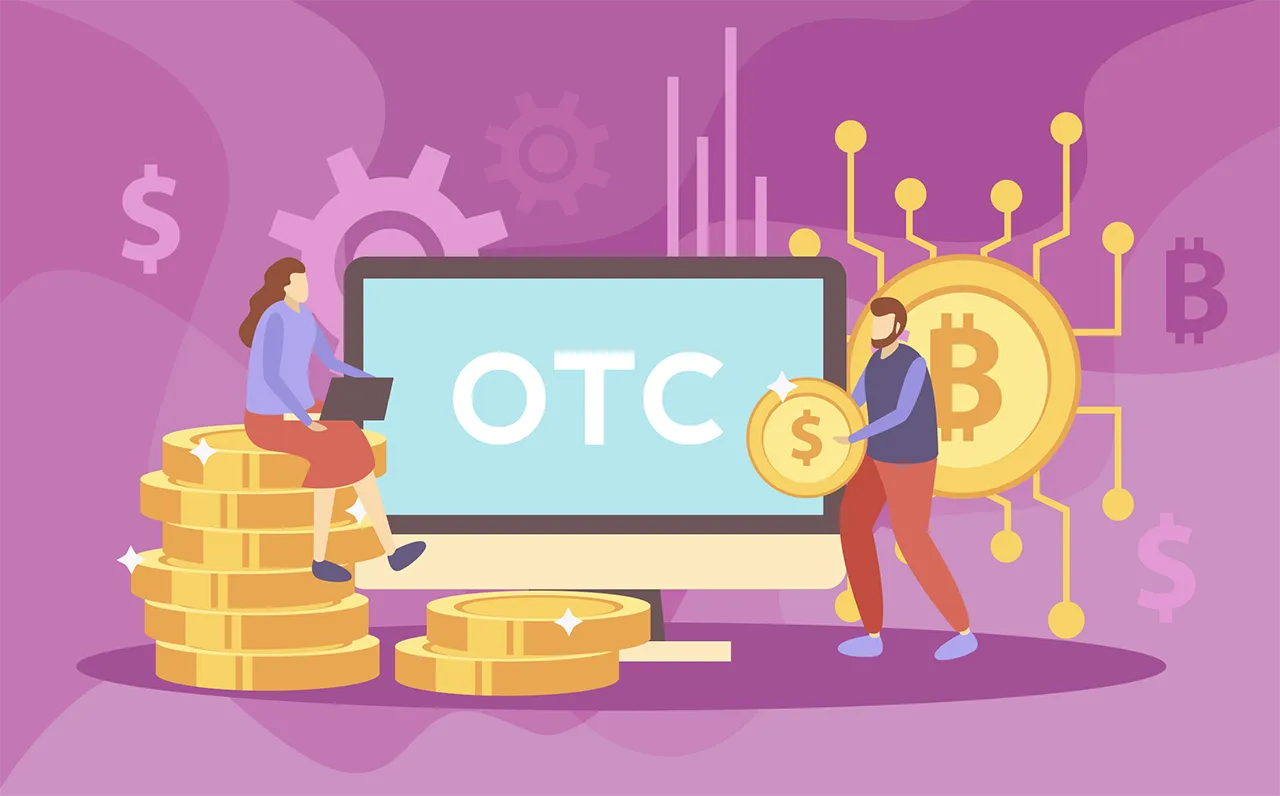When a Bitcoin order worth tens of millions of dollars appears on an exchange, the market price plummets instantly. This is the real reason why so much money is avoiding the open market. Over-the-counter (OTC) trading is not a new concept; it is the core mechanism used by professional players in both traditional finance and the crypto market to execute large orders. This peer-to-peer, privately negotiated model ensures liquidity and price stability, while also fostering a unique ecosystem distinct from exchanges. This article will delve into the operational structure, advantages, and risk management mechanisms of OTC trading .
The definition and core characteristics of OTC transactions
Over-the-counter (OTC) trading refers to a model where buyers and sellers directly negotiate asset transactions through private negotiation. This type of transaction completely bypasses the order book system of centralized exchanges. The price is determined by both parties based on market conditions, and transaction details are kept private. Unlike the standardized contracts on traditional exchanges, each OTC cryptocurrency transaction is a custom-made commercial agreement with specific quantity, price, and settlement terms.
The core characteristics of this trading model are reflected in three aspects: transaction transparency is limited to the two parties involved, liquidity comes from the inventory reserves of market makers, and the price formation mechanism relies on bilateral negotiation. Professional OTC systems instantly aggregate liquidity data from multiple exchanges to provide clients with the best quotes, while using algorithms to prevent large transactions from impacting the open market.
Why must large transactions choose OTC channels?
Depth limitations on public exchanges are a primary factor forcing large trades into the OTC market. When a single order exceeds the market depth, significant slippage costs can occur. For example, a $50 million Bitcoin order could result in a 2-3% price deviation during execution, translating into an additional $1-1.5 million loss for the investor.
The OTC market addresses this issue through market makers. Leveraging their own asset reserves or immediate hedging capabilities, market makers can absorb large orders at once without impacting market prices. Buyers and sellers can also access customized settlement solutions, including flexible arrangements such as split delivery and cross-market settlement, services unavailable on standardized exchanges.
Key operating mechanisms of professional OTC platforms
Modern cryptocurrency trading systems utilize a multi-tiered risk management architecture. The first tier is a counterparty screening mechanism that verifies client identity and source of funds through OTC Know Your Customer (KYC) procedures. The second tier is a real-time market monitoring system that detects unusual quotes and potential market manipulation. The third tier is a fund custody solution that utilizes multi-signature wallets and a hot and cold wallet separation strategy to ensure asset security.
The core technological advantage of these platforms lies in their intelligent routing systems. When receiving large orders, the system automatically splits the order and simultaneously queries prices from multiple liquidity providers, ultimately selecting the best price combination for execution. This entire process typically completes in milliseconds, allowing clients to receive optimized, comprehensive quotes rather than risky prices from a single source.
Ecological analysis of participants in the OTC market
The OTC market has a clear hierarchical structure. At the top are large market makers and mining farms, which hold large amounts of native digital assets and need to liquidate them regularly. In the middle are institutional investors and family offices, which manage large amounts of capital and need to maintain positions in a discreet manner. At the bottom are high-net-worth individual investors, whose trading sizes typically range from $100,000 to $1 million.
This ecosystem also includes key service providers: compliance auditors responsible for anti-money laundering monitoring, technology vendors developing specialized cryptocurrency exchange systems , and legal teams designing transaction structures to mitigate tax risks. This specialized division of labor enables the OTC market to handle complex cross-jurisdictional transactions and meet the specific needs of diverse clients.
Risk Differences Between OTC Trading and Exchange Trading
Credit risk is the most significant risk in the OTC market. Due to time lags in trade settlement, one party may default on its obligation to transfer funds or assets. To mitigate this risk, professional platforms employ a triple safeguard mechanism: pre-funding review, tiered trading limits, and asset locking through smart contracts. These measures keep counterparty risk within acceptable limits.
Liquidity risk manifests itself when market makers suspend quotes under unusual market conditions. During periods of extreme market volatility, market makers may be unable to accurately price or hedge risks, leading to price interruptions. In contrast, exchange trading, while subject to slippage risk, ensures continuous trading. Both models have their advantages and disadvantages, and professional investors often utilize both channels in parallel.
Future development: trends towards intelligence and compliance
Artificial intelligence is reshaping the OTC trading process. Intelligent quotation algorithms can now analyze historical trading patterns to predict optimal prices, and natural language processing technology makes it possible to place orders via chat. Blockchain technology is revolutionizing settlement. Atomic swaps allow for the simultaneous delivery of assets and funds, completely eliminating counterparty risk.
Compliance technology solutions have become a new market hotspot. New OTC systems integrate on-chain analytics tools to monitor fund flows in real time and flag suspicious transactions. Biometric technology is being applied to OTC know-your-customer (KYC) processes, ensuring participant authenticity through facial recognition and document verification. These developments are enabling the OTC market to gradually comply with regulatory requirements while maintaining flexibility.
As the foundational infrastructure of the crypto ecosystem, the OTC market carries the critical function of institutional capital inflows and outflows. This trading model addresses large-scale liquidity challenges through specialized services, while also establishing a risk management system distinct from the public market. With technological advancements and improved compliance, the OTC market will further integrate intelligent risk control and efficient settlement capabilities, paving the way for larger-scale traditional capital to enter the crypto space. For professional investors, understanding the OTC operating mechanisms has become essential knowledge for asset allocation.






